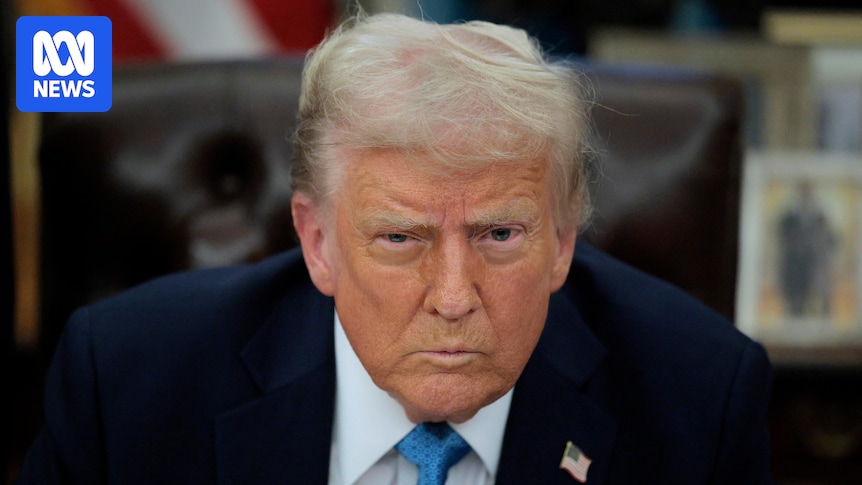Tariffs: The End of Big Consumer Spending?
Editor’s Note: Concerns are mounting about the impact of tariffs on consumer spending. This article explores the potential consequences and offers insights for navigating this economic shift.
Why This Topic Matters
Tariffs, taxes imposed on imported goods, have become a significant factor impacting global trade and consumer spending. Understanding their ripple effects is crucial for businesses, policymakers, and consumers alike. This article examines the current tariff landscape, analyzes its impact on consumer behavior, and explores potential future scenarios. We'll delve into how tariffs affect prices, purchasing power, and overall economic stability, offering practical insights and actionable advice.
Key Takeaways
| Impact Area | Key Takeaway |
|---|---|
| Consumer Prices | Tariffs directly increase prices of imported goods, potentially leading to inflation. |
| Consumer Spending | Reduced purchasing power due to higher prices may curb consumer spending. |
| Economic Growth | Reduced consumer spending can negatively impact overall economic growth. |
| Business Strategies | Businesses need to adapt pricing and sourcing strategies to mitigate tariff impacts. |
Tariffs: The Looming Threat to Consumer Spending
The implementation of tariffs, often justified as a means to protect domestic industries, has far-reaching consequences. In today's interconnected global economy, tariffs don't just affect the targeted goods; they trigger a chain reaction impacting various sectors and ultimately, consumer wallets. This escalation of trade tensions is causing significant uncertainty in the market, further complicating the already complex economic landscape.
Key Aspects of Tariff Impact
- Increased Prices: The most direct impact of tariffs is the increase in the price of imported goods. This price hike is passed on to consumers, reducing their purchasing power.
- Reduced Consumer Confidence: Uncertainty surrounding tariffs can lead to decreased consumer confidence, further dampening spending. Consumers may delay purchases, anticipating further price increases.
- Supply Chain Disruptions: Tariffs can disrupt global supply chains, leading to shortages and further price increases. Businesses may struggle to source materials or products efficiently.
- Retaliatory Tariffs: The imposition of tariffs often provokes retaliatory measures from other countries, escalating the trade conflict and amplifying negative impacts.
Detailed Analysis: A Case Study of the Impact on Electronics
Consider the electronics industry. Many components are sourced globally. Tariffs on these components translate to higher prices for finished products like smartphones and laptops. This directly impacts consumer affordability and may lead to a decline in sales. Manufacturers might also relocate production to avoid tariffs, leading to job losses in some regions and gains in others.
Interactive Elements
The Impact of Tariffs on Everyday Goods
This section will analyze the impact of tariffs on specific categories of everyday consumer goods, such as clothing, furniture, and food. We'll examine real-world examples and present data on price changes since the imposition of tariffs. We will use charts and graphs to visualize the impact.
Navigating the Tariff Landscape: Strategies for Consumers
This section will offer practical advice to consumers on how to navigate the challenges posed by tariffs. This will include strategies for budgeting, shopping smart, and making informed purchasing decisions.
People Also Ask (NLP-Friendly Answers)
Q1: What are tariffs?
A: Tariffs are taxes imposed on imported goods, increasing their price for consumers.
Q2: Why are tariffs important?
A: Tariffs are intended to protect domestic industries, but they can also lead to higher prices and reduced consumer spending.
Q3: How can tariffs benefit me?
A: Tariffs might protect certain domestic industries, potentially creating jobs. However, this benefit is often offset by higher prices for consumers.
Q4: What are the main challenges with tariffs?
A: Challenges include higher prices, reduced consumer spending, supply chain disruptions, and potential retaliatory tariffs.
Q5: How to reduce the impact of tariffs on my spending?
A: Buy domestic products when possible, shop around for the best prices, and consider delaying non-essential purchases.
Practical Tips for Managing Tariff Impacts
Introduction: These tips will help you mitigate the impact of tariffs on your personal finances.
Tips:
- Budget Carefully: Track your spending to identify areas where you can cut back.
- Shop Around: Compare prices from different retailers to find the best deals.
- Buy Domestic: Prioritize purchasing domestically produced goods whenever possible.
- Consider Used Goods: Explore options like buying used or refurbished items to save money.
- Delay Non-Essential Purchases: Postpone non-essential purchases until prices stabilize.
- Negotiate Prices: Don’t be afraid to negotiate prices, especially for large purchases.
- Utilize Coupons and Discounts: Take advantage of sales, discounts, and coupons.
- Diversify Spending: Spread your spending across various categories to minimize risk.
Summary: By implementing these strategies, you can better manage the financial challenges posed by tariffs.
Transition: Let’s wrap up by summarizing the key takeaways from this in-depth look at the impact of tariffs.
Summary (Zusammenfassung)
Tariffs pose a significant challenge to consumer spending. Increased prices, reduced purchasing power, and uncertainty are impacting consumer confidence and overall economic growth. Adapting spending habits and employing smart shopping strategies are crucial for navigating this economic shift.
Closing Message (Schlussbemerkung)
The impact of tariffs on consumer spending is a complex issue with far-reaching consequences. Understanding these impacts empowers both consumers and businesses to make informed decisions and navigate these uncertain times. What steps will you take to adjust your spending in light of these challenges?
Call to Action (CTA)
Share this article with your network to spread awareness about the impact of tariffs. Subscribe to our newsletter for more insights into economic trends and personal finance strategies.

